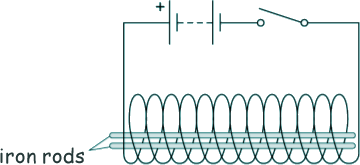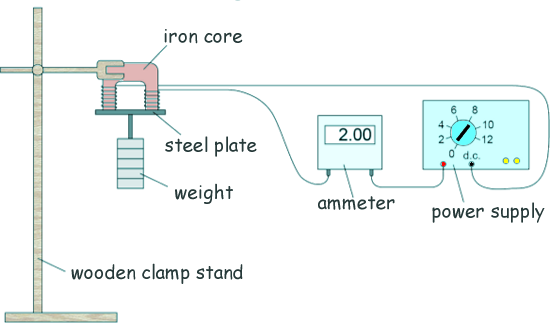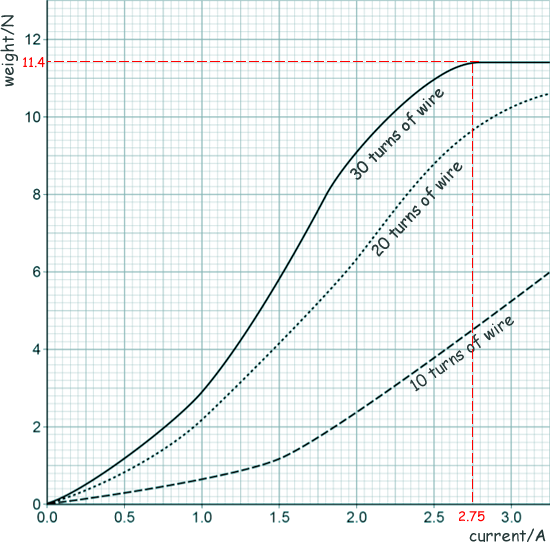GCSE Level Questions: Magnets and Electromagnets Q4. The diagram shows a solenoid.
(a) Draw the magnetic field of the solenoid onto the diagram.
[2 marks] (b) This diagram shows two iron rods placed inside a solenoid:
Explain why the iron rods move apart when the switch is closed. Magnetism is induced in the rods
[2 marks] (c) Ross investigated the strength of an electromagnet. He was instructed to investigate how the strength depended on:
Here is the equipment he used
Ross measured the strength of the electromagnet by finding the maximum weight the electromagnet could hold. The table below shows his results.
Explain why the method used by the student is not valid for this investigation. The results show that Ross changed two independent variables at the same time,
[2 marks] (d) Chandler used the same equipment to perform his investigation. Here are Chandler's results displayed on a graph:
[1 mark]
[1 mark] (TOTAL 14 marks) |
Follow me...
|









